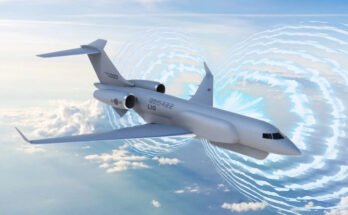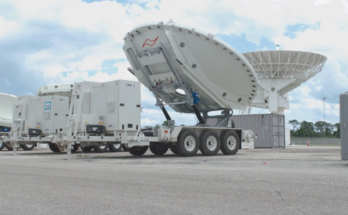by Richard Sterk, Electronic Systems Analyst, Forecast International.
The space-based Nuclear Detonation (NUDET) Detection System (NDS) was developed during the Cold War for the purpose of detecting, locating, and reporting on nuclear detonations in the Earth’s atmosphere and near space in as near real-time as possible. Now, the system supports nuclear force management, integrated tactical warning and attack assessment, and monitoring for compliance with the test-ban treaty.
Program work continues to focus on upgrades to core systems such as X-ray and optical sensors, as well as the ground portion of the system.
The Space and Atmospheric Burst Reporting System (SABRS) has been reported as a possible replacement for NUDET. SABRS integrates a fast-gamma and spectroscopy-class gamma-ray detector into a single crystal featuring good energy resolution and response characteristics. The system is significantly lower in weight and power than NUDET. The SABRS package weighs 35 pounds and requires 20 watts, whereas the older system weighs 160 pounds and requires 100 watts. In addition, the SABRS does not require an X-ray detector.
SABRS was not yet sufficiently developed for deployment on GPS Block IIF launches, so it was instead targeted for deployment on Space-Based Infrared System (SBIRS) High satellites. SABRS is also being evaluated as a possible replacement for the aging Defense Support Program (DSP) satellites. It is designed to provide maximum capability at minimum weight, power, and cost. Additionally, it operates with existing satellite telemetry architectures in order to minimize the impact on ground data and relay systems.
Going forward, R&D funding for NUDET can be expected to fluctuate in parallel with the development of system enhancements and upgrades, in particular for its ground terminal.
Overall, the U.S. Department of Defense views NUDET as a necessity as technology advances and the ability to construct “backyard” nuclear bombs becomes more feasible.
FI’s eight Electronic Systems Market Intelligence Services cover the full range of defense-related systems and programs in the radar, communications, electro-optical, and electronic warfare markets, presenting a comprehensive market outlook for current equipment as well as new systems being developed as the modern battlefield moves toward a technology-based warfare approach with network-centric capabilities.
For 50 years, Forecast International intelligence reports have been the aerospace and defense industry standard for accurate research, analysis, and projections. Our experienced analysts compile, evaluate, and present accurate data for decision makers. FI's market research reports offer concise analysis of individual programs and identify market opportunities. Each report includes a program overview, detailed statistics, recent developments and a competitive analysis, culminating in production forecasts spanning 10 or 15 years. Let our market intelligence reports be a key part of reducing uncertainties and mastering your specific market and its growth potential. Find out more at www.forecastinternational.com




